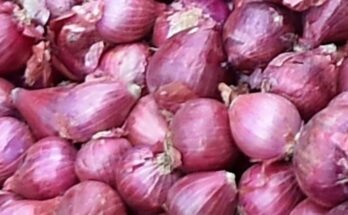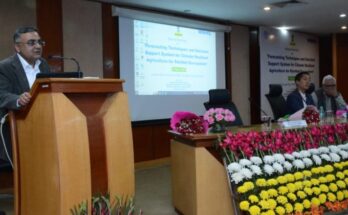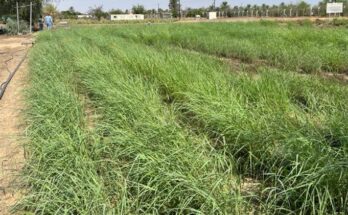The Government of India is planning to cover 291 aspirational and heavy burden districts by March 2023 under the rice fortification programme. Briefing the media in New Delhi on Monday, Sudhanshu Pandey, Secretary, Department of Food & Public Distribution, said under the Phase II of the ‘Distribution of Fortified Rice through Public Distribution System (PDS)’, which began in April 2022, overcoming all production-related challenges, 90 LMT (Lakh Metric Tonnes) of fortified rice has already been produced. The Phase II of the programme which includes Phase I plus TPDS (Targeted Public Distribution System) and OWS (other welfare schemes) in all aspirational and high burden districts, a total of 291 districts, will be covered by March 2023.
The secretary informed that Phase I covered ICDS (Integrated Child Development Services) and PM-POSHAN programme in India all over by March, 2022 and nearly 17 Lakh MT of fortified rice was distributed. However, Under PDS, more than 90 districts in 16 states have started lifting fortified rice and around 2.58 lakh MT have been distributed so far.
Pandey also said that independent concurrent evaluation would be carried out by the Development Monitoring & Evaluation Office (DMEO) under NITI Aayog of the rice fortification to assess the outcomes and impact of the programme. He added that the steering committee in the states would monitor the implementation of the programme.
You may also like to read: Leads Connect launches tech-enabled SIGMAA pilot study to double farmers’ income
As part of vigorous implementation efforts, the Department of Food and Public Distribution has been coordinating all ecosystem-related activities with all relevant stakeholders like state governments, union territories, line ministries and departments, development partners, industries and research institutes. Food Corporation of India (FCI) and state agencies are engaged in the procurement of fortified rice and so far, nearly 126.25 LMT of fortified rice has been procured for supply and distribution. The entire cost of rice fortification (around Rs. 2700 crore per annum) would only be borne by the Government of India as part of food subsidy till its full implementation up to June, 2024.
On the occasion, Joint Secretary DFPD, S. Jagannathan made a presentation on ‘Rice Fortification and its distribution under PDS, ICDS, PM-POSHAN among other programmes. He outlined the process of distribution of fortified rice and also highlighted that Phase I served as a platform to put in place an ecosystem for districts for the scheme. In Phase III, along with districts covered under Phase II, the remaining districts will be covered by March 2024.
Dr. Kapil Yadav, Additional Professor, Centre for Community Medicine (CCM) All India Institute of Medical Sciences (AIIMS), New Delhi, also made a presentation on ‘Staple Food Fortification as a Complementary Strategy to Address Micronutrient Vulnerability’. He said that Food Fortification is a cost-effective complementary strategy to address multiple micronutrient deficiencies. Dr. Yadav pointed out that only 0.01 per cent of population may face health risks due to consumption of fortified rice, particularly those ailing with Thalassemia Major. He added that fortified rice helps prevent Cretinism, Goiter, IIH (Thyrotoxicosis), brain damage, improvement in Foetal and Neonatal health and improvement in productivity of the population. Therefore, the benefits of rice fortification intervention far outweigh the risks involved.
You may also like to read: 4 ways to make agritech platforms user-friendly for farmers
Globally, more than two billion population have multiple micronutrient deficiencies, 1.6 billion people have anaemia, more than 50 per cent have iron deficiency, 260,100 pregnancies every year are affected by Neural Tube Defects (NTDs) and the multiple micronutrient deficiencies are an important cause of mortality, morbidity, impaired human development.
Dr. Siddharth Waghulkar, Deputy Head-Nutrition and School Feeding unit, United Nations World Food Programme (UN-WFP) in his presentation on ‘Rice Fortification: Process and Evidence’ briefed about the fortification process and the evidence from various Indian studies.
Earlier, a Centrally sponsored pilot scheme on “Fortification of Rice and its Distribution under Public Distribution System” was implemented for a period of three years beginning from 2019-20. Eleven states successfully distributed the fortified rice in their identified districts (one district per state) under the pilot scheme. The pilot scheme has been over on 31.03.2022 and nearly 4.30 Lakh MT of fortified rice had been distributed.
Cabinet Committee on Economic Affairs (CCEA) has accorded its approval for the supply of fortified rice throughout the Targeted Public Distribution System (TPDS) under the National Food Security Act (NFSA), Integrated Child Development Services (ICDS), Pradhan Mantri Poshan Shakti Nirman-(PM-POSHAN) [erstwhile Mid-Day Meal Scheme (MDM)] and other welfare schemes (OWS) of Government of India in all states and union territories (UTs) by 2024 in a phased manner.





